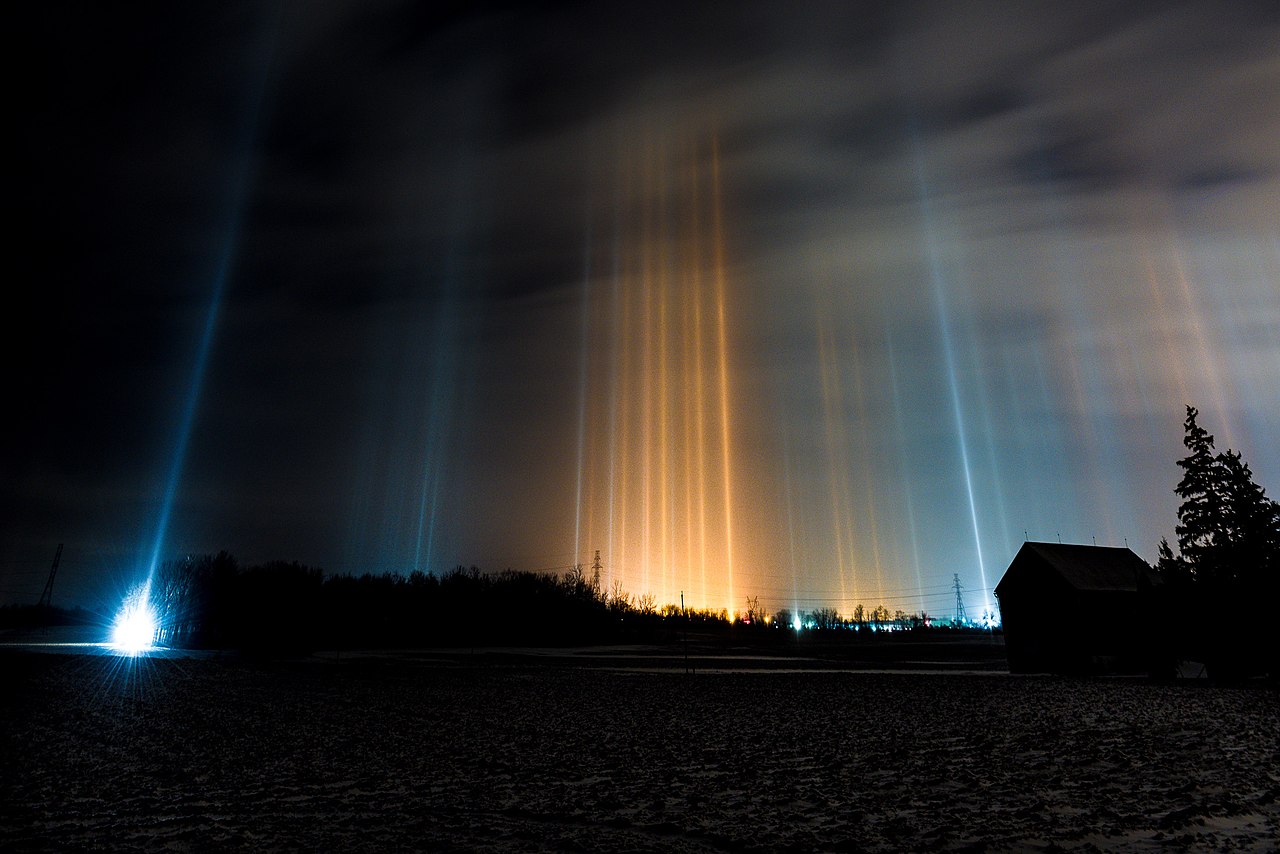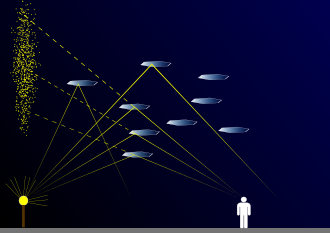Light Pillar
Source: Wikipedia
A light pillar is an atmospheric optical phenomenon in which a vertical beam of light appears to extend above and/or below a light source. The effect is created by the reflection of light from tiny ice crystals that are suspended in the atmosphere or that comprise high-altitude clouds (e.g. cirrostratus or cirrus clouds). If the light comes from the Sun (usually when it is near or even below the horizon), the phenomenon is called a sun pillar or solar pillar. Light pillars can also be caused by the Moon or terrestrial sources, such as streetlights and erupting volcanoes.

Since they are caused by the interaction of light with ice crystals, light pillars belong to the family of halos. The crystals responsible for light pillars usually consist of flat, hexagonal plates, which tend to orient themselves more or less horizontally as they fall through the air. Each flake acts as a tiny mirror which reflects light sources that are appropriately positioned below it (see graphic below), and the presence of flakes at a spread of altitudes causes the reflection to be elongated vertically into a column.





